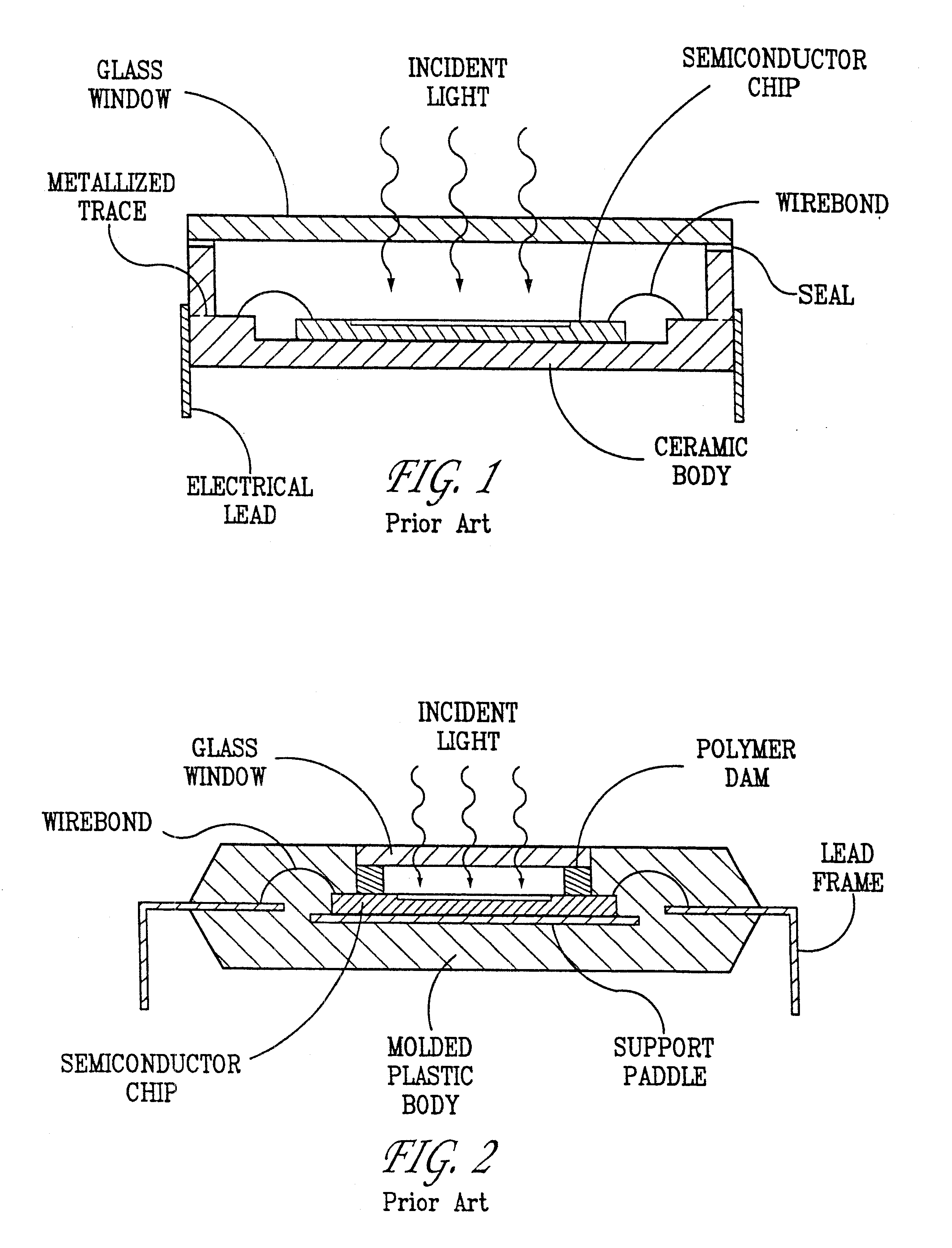Bi-level multilayered microelectronic device package with an integral window
- Summary
- Abstract
- Description
- Claims
- Application Information
AI Technical Summary
Benefits of technology
Problems solved by technology
Method used
Image
Examples
Embodiment Construction
The present invention relates to a package for housing at least one microelectronic device, comprising a hollow assembly of stacked, electrically insulating plates and an integral window.
It should be noted that the examples of the present invention shown in the figures are sometimes illustrated with the window facing down, which is the preferred orientation during flip-chip bonding. However, those skilled in the art will understand that the completed package can be oriented for use with the window facing upwards. It should also be noted that all of the figures show only a single microelectronic device, illustrated as a microelectronic device or pair of chips. It is intended that the method and apparatus of the present invention should be understood by those skilled in the art as applying equally to a plurality of chips or devices packaged in a one-dimensional or a two-dimensional array, as in a multi-chip module (MCM), including multiple windowed-compartments, and including having a...
PUM
 Login to View More
Login to View More Abstract
Description
Claims
Application Information
 Login to View More
Login to View More - R&D
- Intellectual Property
- Life Sciences
- Materials
- Tech Scout
- Unparalleled Data Quality
- Higher Quality Content
- 60% Fewer Hallucinations
Browse by: Latest US Patents, China's latest patents, Technical Efficacy Thesaurus, Application Domain, Technology Topic, Popular Technical Reports.
© 2025 PatSnap. All rights reserved.Legal|Privacy policy|Modern Slavery Act Transparency Statement|Sitemap|About US| Contact US: help@patsnap.com



